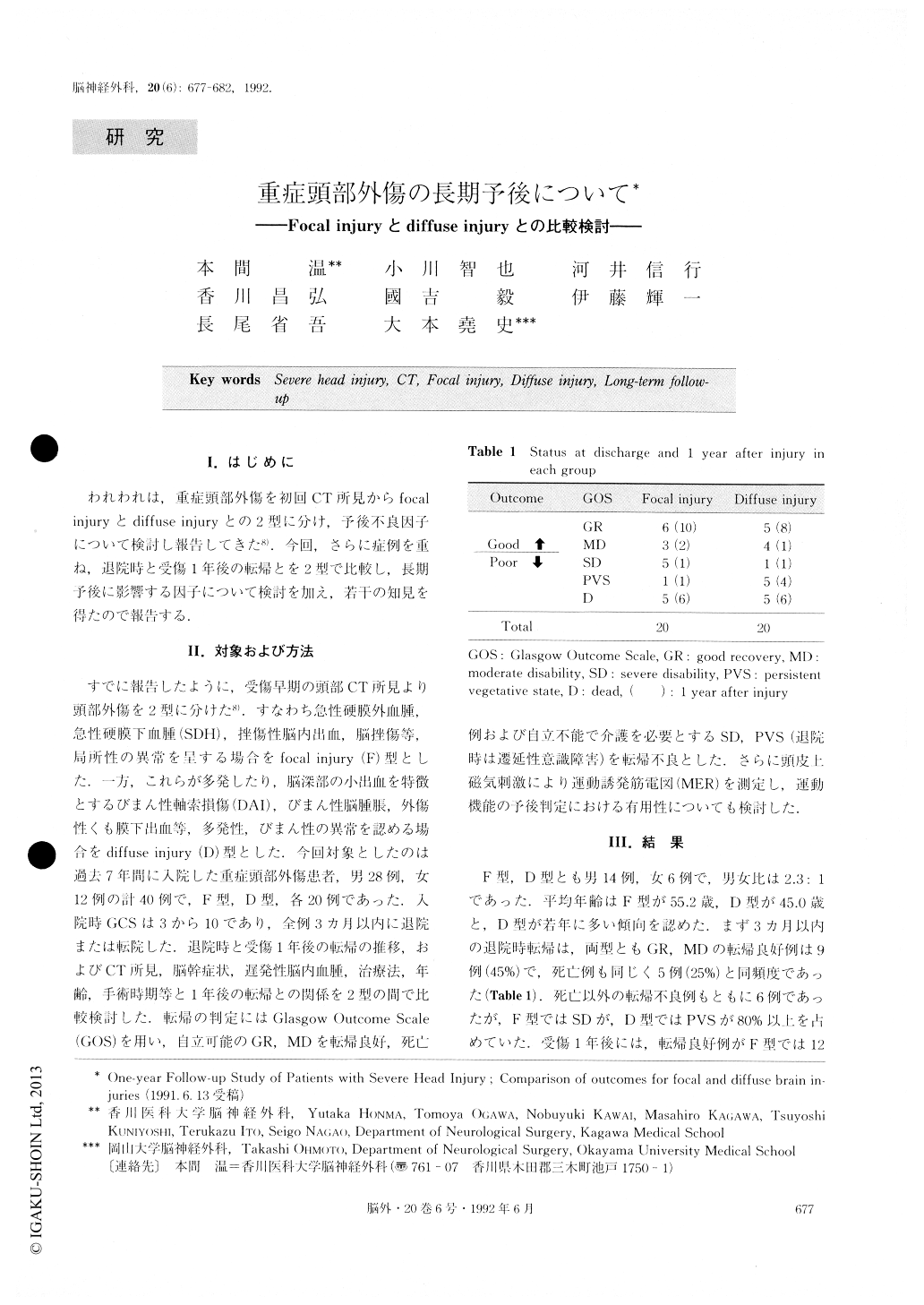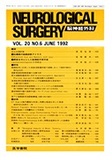Japanese
English
- 有料閲覧
- Abstract 文献概要
- 1ページ目 Look Inside
I.はじめに
われわれは,重症頭部外傷を初回CT所見からfocalinjuryとdiffuse injuryとの2型に分け,予後不良因子について検討し報告してきた8)今回,さらに症例を重ね,退院時と受傷1年後の転帰とを2型で比較し,長期子後に影響する因子について検討を加え,若干の知見を得たので報告する.
Forty patients with severe head injury were classified on the basis of initial CT findings into 2 groups of focal injury (n = 20, mean age = 55.2 years) , and diffuse in-jury (n=20, mean age=45.0 years). Glasgow Outcome Scale (GOS) status at 2 post-injury intervals (at dis-charge and 1 year after injury) of the 2 groups were compared and prognostic factors examined.
At discharge (less than 3 months after injury), there were slight differences between the 2 groups in GOS score distribution, with nearly half of the patients in each group being independent. One year after injury, mean GOS score of the focal injury group was relative-ly more favorable, with about 60% of patients being in-dependent, while no significant improvement was observed in the diffuse injury group. With the excep-tion of brainstem signs, in both groups, the parametersof type of lesion detected on initial CT, modality of treatment, patient age, and operative timing all proved of little prognostic value. Brainstem injury due to in-tracranial mass lesions or postoperative brain edema was presumably a critical factor affecting prognosis in the focal injury group, while both primary and secon-dary brainstem injuries could have been major factorsaffecting prognosis in the diffuse injury group. In the prognosis of patients with severe head in-juries, not only the parameter of initial CT findings but also time course of changes in brainstem signs, serial CT findings, MRI, and electrophysiological analyses such as motor evoked response should be considered.

Copyright © 1992, Igaku-Shoin Ltd. All rights reserved.


